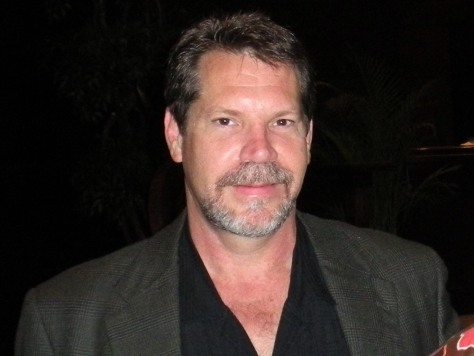SOURCE: NBC News (Maggie Fox reporting)
Robert Ward remembers his very last run. It was the day after Bill Clinton was elected president in 1992 and he had a nice, shady road to jog along in Huntsville, Ala. But Ward, who was 32 at the time, couldn't finish.
"It was that kind of tired that you have after a long day when you've been working for hours and you go home and you hit the bed and you fall asleep immediately," Ward said.

The veteran of the first Gulf War knew he was having another of the spells of intense fatigue that had dogged him since his first deployment into Saudi Arabia in 1991. Now a new imaging study suggests there may be something different in his brain, and in the brains of other sufferers of Gulf War illness, that may help explain it.
It's only a small study and it doesn't show anything definitive. But veterans like Ward are eager to seize on anything that might explain their symptoms. "I am in pain every day. My muscles hurt all the time," says Ward, who can't work full time because of his pain and fatigue.
The team working in the lab of Dr. James Baraniuk at Georgetown University found what looks like damage in the white matter of the brains of Gulf War veterans suffering pain and fatigue. They used a kind of brain scan called functional magnetic resonance imaging, or fMRI.
"These novel findings are really exciting because they provide validation for many veterans who have long said that no one believes them," says graduate student Rakib Rayhan, who worked on the study, published in the Public Library of Science journal PloS ONE.
The researchers compared 31 Gulf War veterans to 20 similar veterans and civilians. They could only process a few because the scans, which look at the brain's functions in real-time, are expensive. "MRI scans for something like this cost $1,100 an hour," says Rayhan.
The work, funded by the Department of Defense under an order from Congress to pay for research into Gulf War Illness, showed those veterans who had pain and fatigue also had changes in the right inferior fronto-occipital fasciculus -- a bundle of nerve fibers that Rayhan says helps process perception of pain and fatigue. "The severity of pain and fatigue correlated with the amount of damage," he says.
Brain imaging isn't always that clear-cut, and the team didn't perform a perfectly controlled experiment. Rayhan agrees the work will need to be replicated in more people and in different groups -- perhaps comparing the veterans with pain to other patients with chronic pain, and also comparing Gulf War veterans with symptoms to Gulf War veterans without symptoms.
But several teams of experts are trying to find ways to objectively measure the many symptoms that Gulf War veterans have, to find out what causes them and to try to look for treatments.
The Department of Defense was slow to even recognize that there was any any such thing as Gulf War syndrome. But now DoD is funding research and in January, the independent Institute of Medicine said the Department of Veterans Affairs needs to do more to help patients with Gulf War illness.
"Chronic multisymptom illness (CMI) is a serious condition that imposes an enormous burden of suffering on our nation's veterans," the Institute of Medicine panel said. "About 700,000 military personnel served in the 1991 Gulf War, and as of September 2011, about 2.6 million military personnel have been deployed to the Iraq and Afghanistan wars."
As many as a quarter of the Gulf War veterans complain of these symptoms.
In 2006, Dr. Beatrice Golomb of the University of California, San Diego, and colleagues reported that exposure to pesticides, nerve agents and other chemicals may explain some of the problems, which range from constant headaches toirritable bowel syndrome. Some research suggests veterans have a higher rate of neurological illness, including the untreatable and deadly amyotrophic lateral sclerosis (ALS), or Lou Gehrig's disease.
Ward can't remember being exposed to any pesticides but, like thousands of other troops, he breathed in smoke from burning oil wells as troops moved from Saudi Arabia into Iraq and Kuwait. "There were a couple days when the sun was like the moon because there was so much oil smoke in the air," he says.
"We took a lot of inoculations. I smoked up to a pack a day. That certainly contributed," adds Ward. The fatigue started soon after he deployed. Ward, who was 30 when the Gulf War started in 1990, says he'd been an athlete before that. He ended up living with his parents in Alabama and is now living in Rhode Island, undergoing treatment at a clinic in Providence and living on disability payments.
He's often so tired that he spends the day in bed and says the pain in his arms and legs feels like the cramping of a charley horse. He's only worked about seven of the past 20 years, he says, and never married.
"It's hard to attract someone when you have such a significant health problem," he says.
--
Sean Eagan
American Cold War Veterans, Inc.
| Web: | http://americancoldwarvets.org/ |
| Blog: | Cold War Veterans Blog |
| Email: | Sean.Eagan@gmail.com |
| Phone: | |
| Network: | My Fast Pitch! Profile |



No comments:
Post a Comment
Do you have something to say?